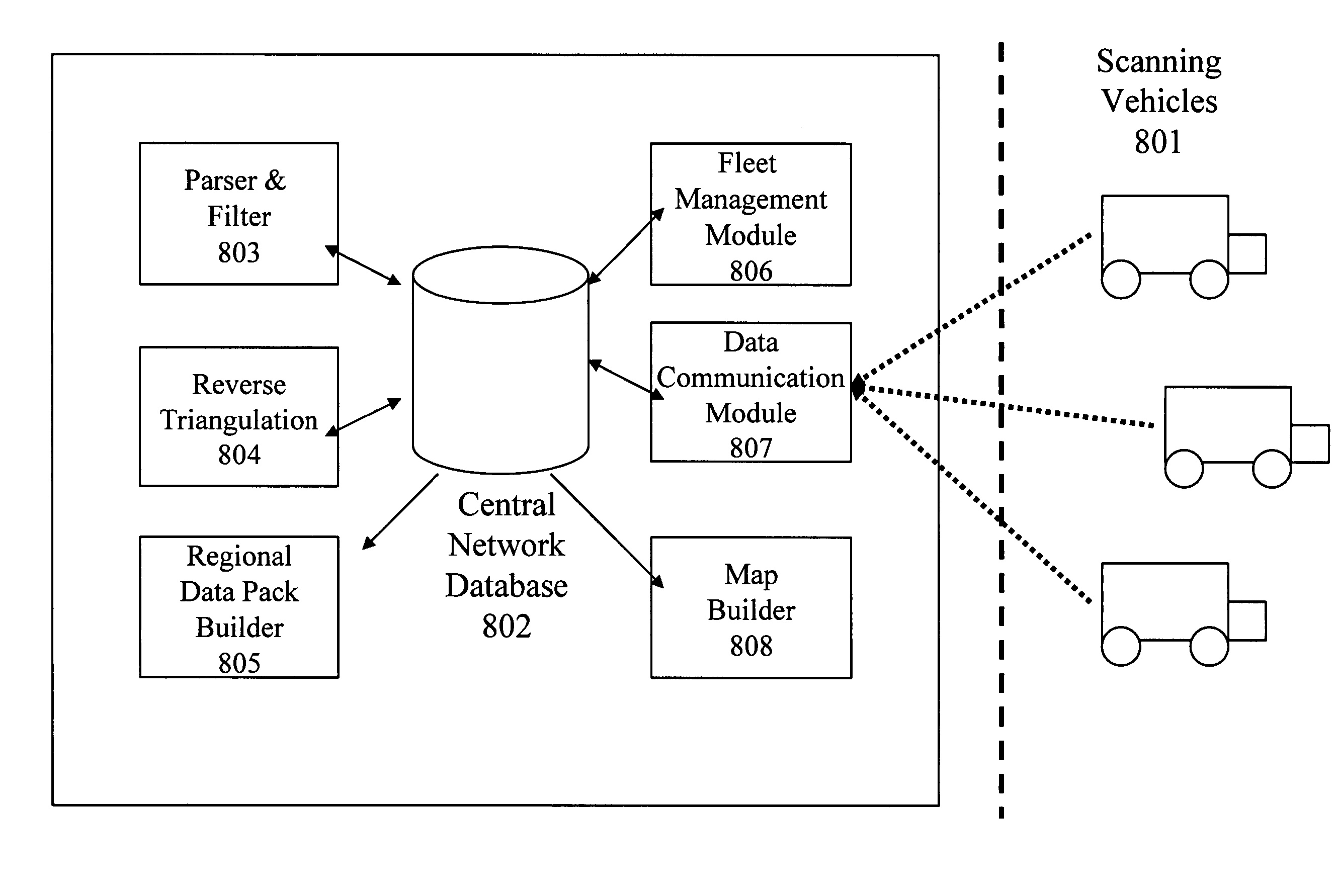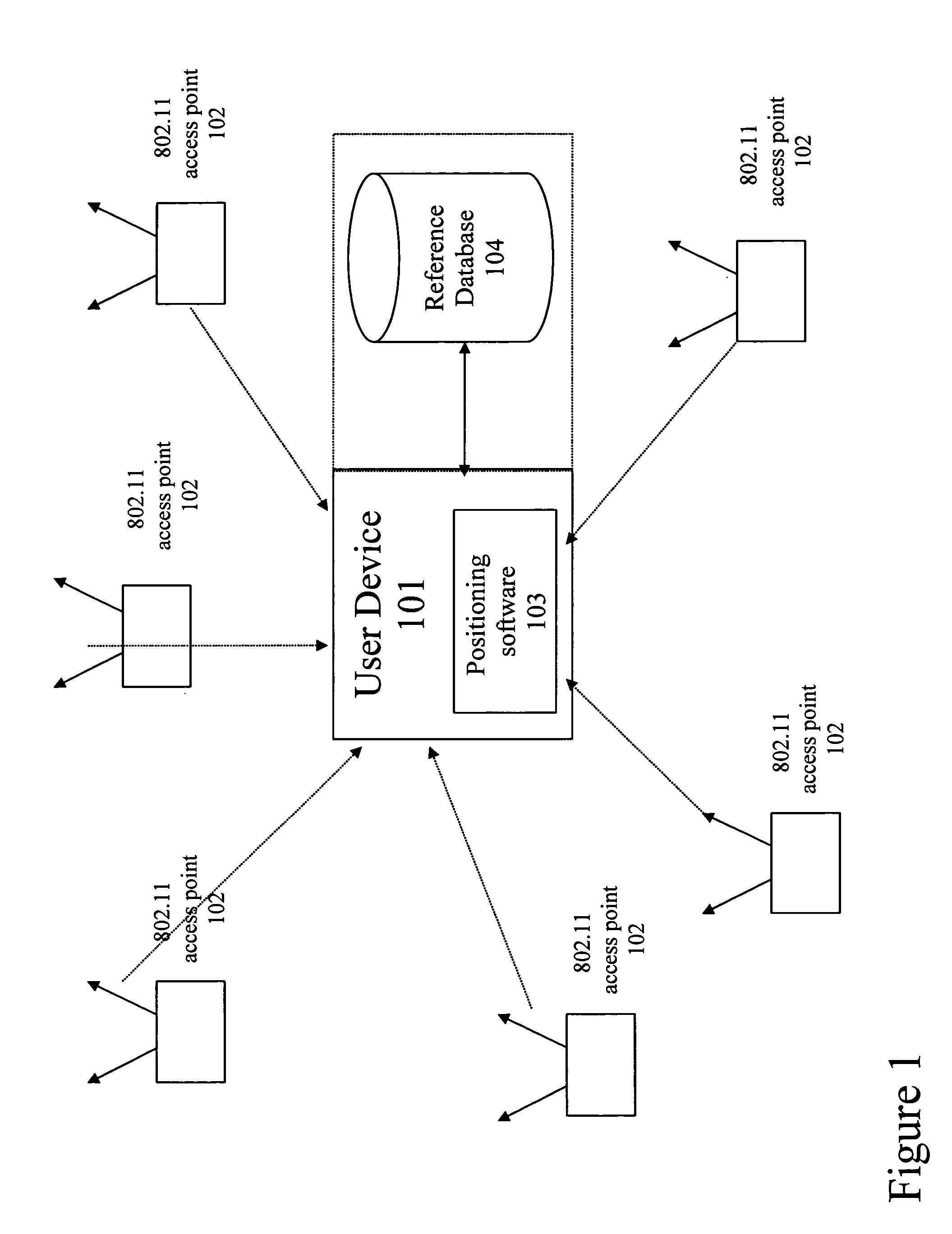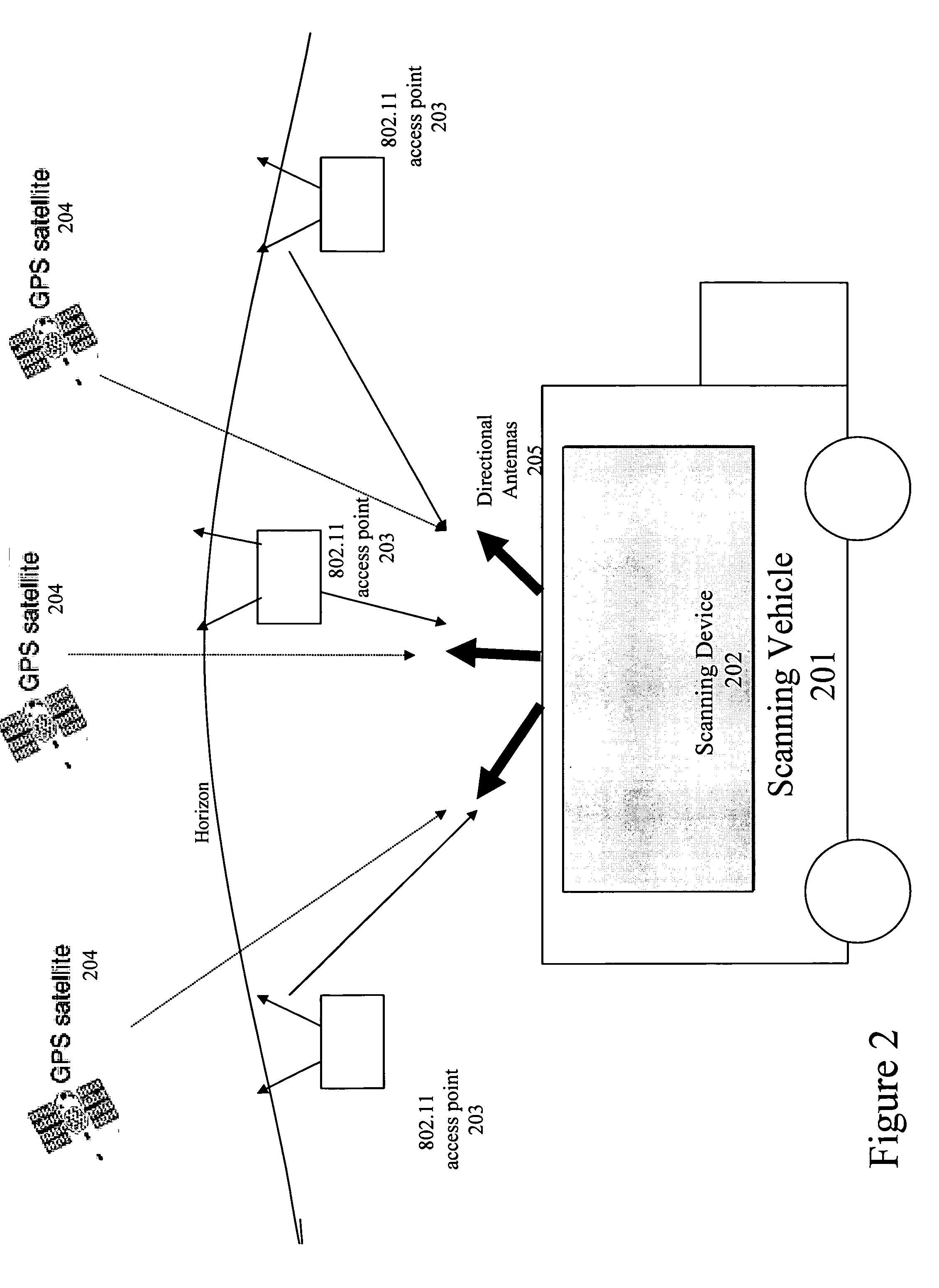Server for updating location beacon database
a technology for location beacons and servers, applied in the field of server for updating location beacon database, can solve problems such as suboptimal approaches, substantial errors, and confusion of receivers
- Summary
- Abstract
- Description
- Claims
- Application Information
AI Technical Summary
Benefits of technology
Problems solved by technology
Method used
Image
Examples
Embodiment Construction
[0035] Preferred embodiments of the present invention provide a system and a methodology for gathering reference location data to enable a commercial positioning system using public and private 802.11 access points. Preferably, the data is gathered in a programmatic way to fully explore and cover the streets of a target region. The programmatic approach identifies as many Wi-Fi access points as possible. By gathering location information about more access points, preferred embodiments not only provide a larger collection of location information about access points, but the location information for each access point may be calculated with more precision. Subsequently this larger set of more precise data may be used by location services to more precisely locate a user device utilizing preferred embodiments of the invention. Certain embodiments use techniques to avoid erroneous data in determining the Wi-Fi positions and use newly-discovered position information to improve the quality ...
PUM
 Login to View More
Login to View More Abstract
Description
Claims
Application Information
 Login to View More
Login to View More - R&D
- Intellectual Property
- Life Sciences
- Materials
- Tech Scout
- Unparalleled Data Quality
- Higher Quality Content
- 60% Fewer Hallucinations
Browse by: Latest US Patents, China's latest patents, Technical Efficacy Thesaurus, Application Domain, Technology Topic, Popular Technical Reports.
© 2025 PatSnap. All rights reserved.Legal|Privacy policy|Modern Slavery Act Transparency Statement|Sitemap|About US| Contact US: help@patsnap.com



